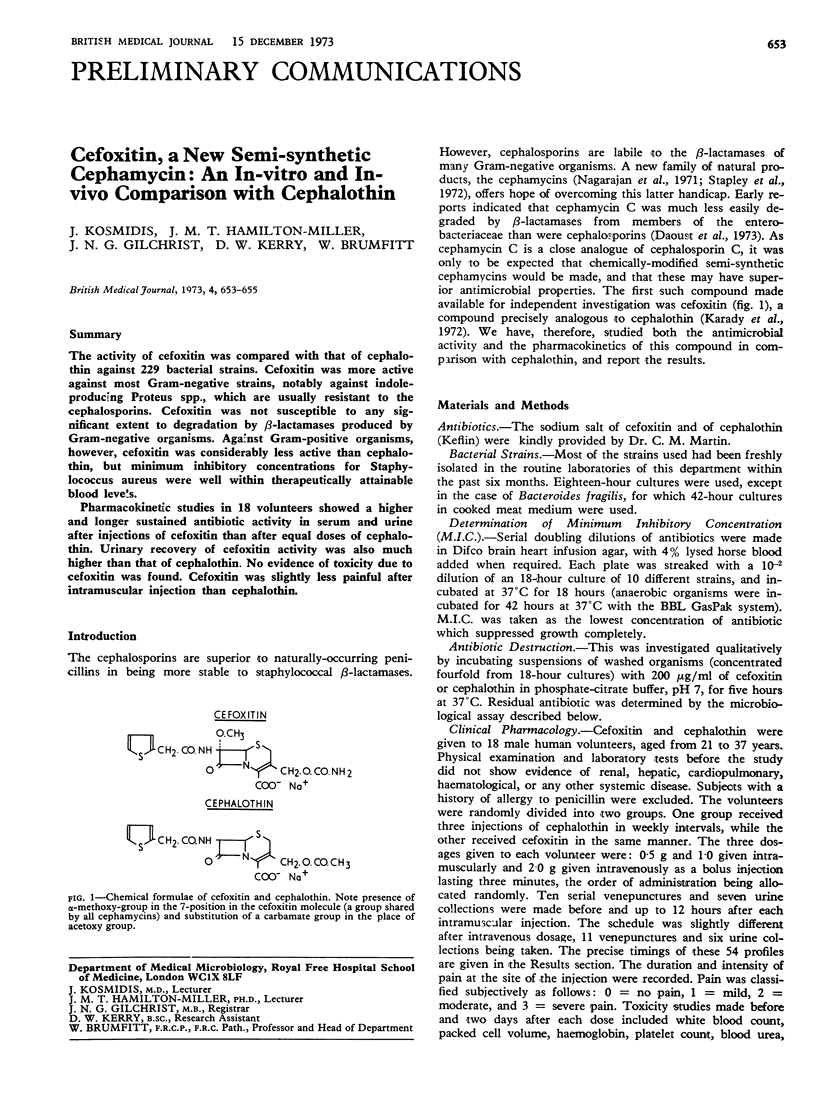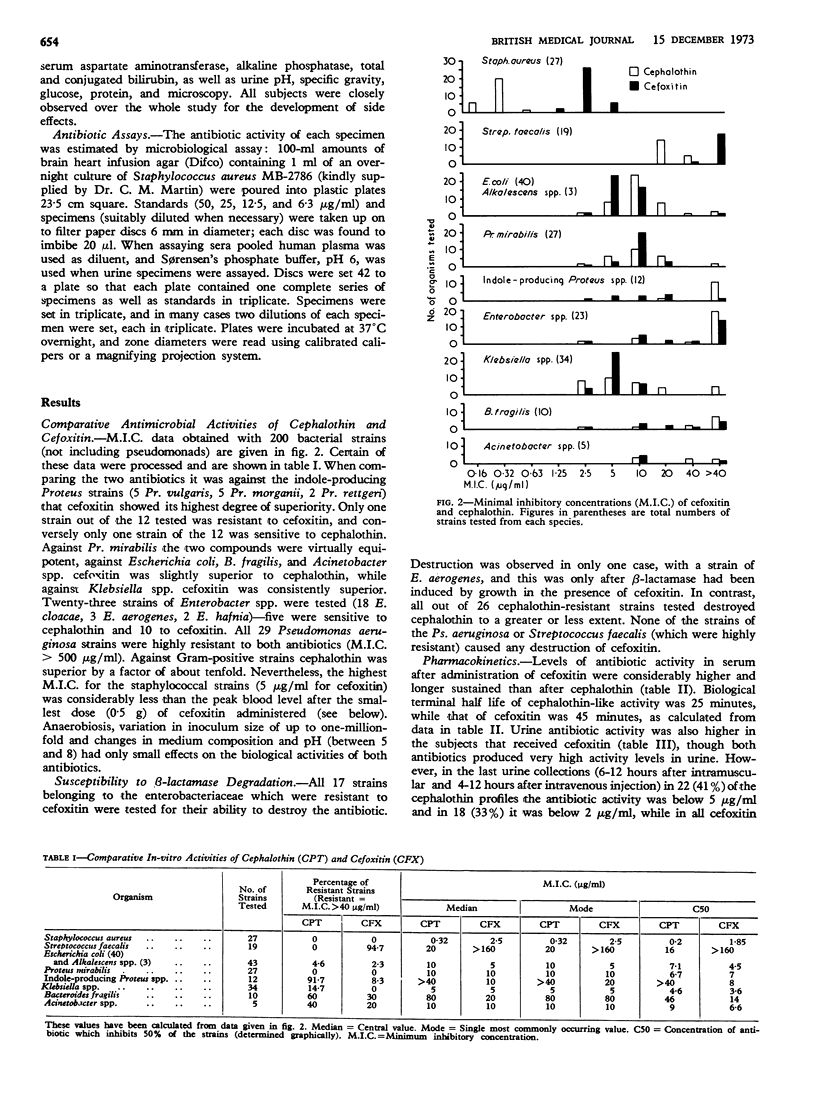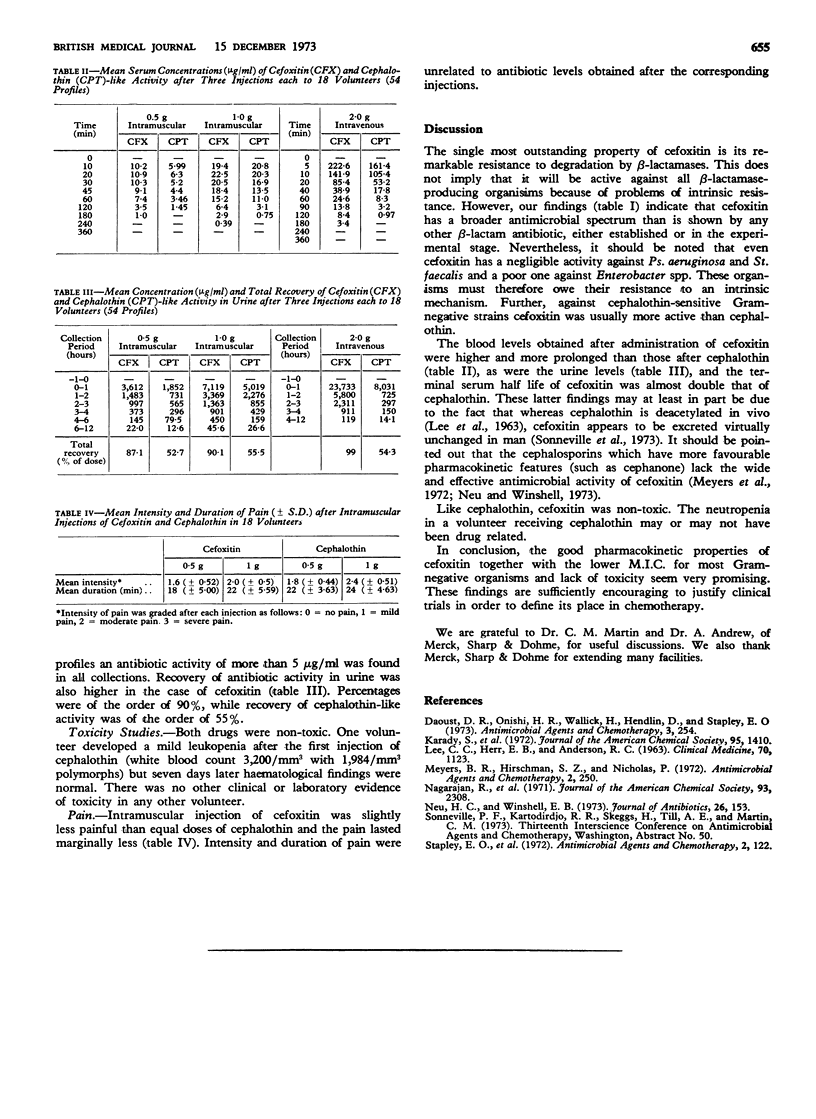Abstract
The activity of cefoxitin was compared with that of cephalothin against 229 bacterial strains. Cefoxitin was more active against most Gram-negative strains, notably against indole-producing Proteus spp., which are usually resistant to the cephalosporins. Cefoxitin was not susceptible to any significant extent to degradation by β-lactamases produced by Gram-negative organisms. Against Gram-positive organisms, however, cefoxitin was considerably less active than cephalothin, but minimum inhibitory concentrations for Staphylococcus aureus were well within therapeutically attainable blood levels.
Pharmacokinetic studies in 18 volunteers showed a higher and longer sustained antibiotic activity in serum and urine after injections of cefoxitin than after equal doses of cephalothin. Urinary recovery of cefoxitin activity was also much higher than that of cephalothin. No evidence of toxicity due to cefoxitin was found. Cefoxitin was slightly less painful after intramuscular injection than cephalothin.
Full text
PDF


Selected References
These references are in PubMed. This may not be the complete list of references from this article.
- Daoust D. R., Onishi H. R., Wallick H., Hendlin D., Stapley E. O. Cephamycins, a new family of beta-lactam antibiotics: antibacterial activity and resistance to beta-lactamase degradation. Antimicrob Agents Chemother. 1973 Feb;3(2):254–261. doi: 10.1128/aac.3.2.254. [DOI] [PMC free article] [PubMed] [Google Scholar]
- Karady S., Pines S. H., Weinstock L. M., Roberts F. E., Brenner G. S., Hoinowski A. M., Cheng T. Y., Sletzinger M. Semisynthetic cephalosporins via a novel acyl exchange reaction. J Am Chem Soc. 1972 Feb 23;94(4):1410–1411. doi: 10.1021/ja00759a090. [DOI] [PubMed] [Google Scholar]
- LEE C. C., HERR E. B., Jr, ANDERSON R. C. Pharmacological and toxicological studies on cephalotin. Clin Med (Northfield) 1963 Jun;70:1123–1138. [PubMed] [Google Scholar]
- Meyers B. R., Hirschman S. Z., Nicholas P. Cephanone: in vitro antibacterial activity and pharmacology in normal human volunteers. Antimicrob Agents Chemother. 1972 Oct;2(4):250–254. doi: 10.1128/aac.2.4.250. [DOI] [PMC free article] [PubMed] [Google Scholar]
- Neu H. C., Winshell E. B. In vitro studies of cephanone, a 3-heterocyclic-thiomethyl cephalosporin derivative. J Antibiot (Tokyo) 1973 Mar;26(3):153–156. doi: 10.7164/antibiotics.26.153. [DOI] [PubMed] [Google Scholar]
- Stapley E. O., Jackson M., Hernandez S., Zimmerman S. B., Currie S. A., Mochales S., Mata J. M., Woodruff H. B., Hendlin D. Cephamycins, a new family of beta-lactam antibiotics. I. Production by actinomycetes, including Streptomyces lactamdurans sp. n. Antimicrob Agents Chemother. 1972 Sep;2(3):122–131. doi: 10.1128/aac.2.3.122. [DOI] [PMC free article] [PubMed] [Google Scholar]


